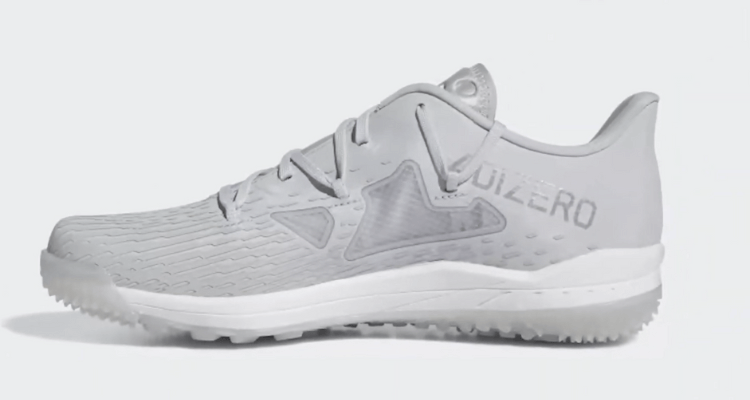Baseball is a game of speed, precision, and agility & the right footwear can be the difference between a high-flying catch and an out. From cleats built for explosive sprints to turf shoes made to withstand the wear and tear of hours of practice, this guide explores what shoes baseball players wear and highlights some of the best brands, latest technologies, and league regulations. Whether you play, coach or parent, find out how to select the right pair for every position, playing surface, and budget.

Why Baseball Shoes Matter
Baseball requires fast pivots, slides, and sprints, making footwear that can offer a winning combination of traction, support, and comfort crucial. Modern cleats and turf shoes like those made with Nike’s Zoom Air cushioning and Adidas’s featherweight Boost midsoles feed off innovations in other forms of footwear, even as they remain dutiful in their compliance with strict guidelines (MLB, for example, prohibits colored spikes). Here’s the lowdown on the basics.
Types of Baseball Shoes
- Cleats
- Metal Cleats: Preferred by pros for superior grip on dirt and grass. Models like the Under Armour Harper 6 and Nike Vapor Untouchable Pro 3 feature replaceable spikes for wet fields.
- Molded Cleats: Safer for youth leagues (e.g., New Balance 4040v5) with durable rubber soles.
- Hybrid Cleats: Versatile options like the Adidas Icon 7 for turf and dirt.
- Turf Shoes
- Designed for artificial surfaces, with rubberized soles (e.g., Mizuno 9-Spike Trainer). Ideal for practice or training drills.
- Trainers
- Lightweight cross-trainers like the ASICS Gel-Quantum 360 for gym workouts or recovery days.
Top Brands & Models
- Nike: Dominates with Vapor Untouchable (speed) and Force Zoom Trout (ankle support).
- Adidas: Combines style and tech in the Adizero Afterburner (Boost cushioning).
- New Balance: Offers wide-fit options like 3000v4 for players with orthotics.
- Under Armour: Harper 6 cleats feature Micro G foam for catchers needing stability.
- Mizuno: 9-Spike Trainer excels in wet conditions with TPU outsoles.

Position-Specific Footwear
- Pitchers: Prioritize toe protection (e.g., Nike Air Zoom MVP) for repeated push-offs.
- Catchers: Require ankle support and shock absorption (Under Armour Harper 6).
- Outfielders: Opt for lightweight designs (Adidas Adizero) to chase fly balls.
- Infielders: Need quick lateral movement (molded cleats like New Balance 3000v4).
MLB, NCAA & Youth League Regulations
- Metal vs. Molded: MLB allows metal spikes; NCAA and Little League often restrict them.
- Spike Length: Max ½-inch in high school (NFHS rules).
- Color Rules: MLB bans non-team-colored cleats during games.
Key Technologies & Materials
- Cushioning: Nike Zoom Air, Adidas Boost, and Under Armour Charged Foam.
- Uppers: Synthetic leather (Nike Flyknit) for breathability or kangaroo leather (Mizuno Pro) for durability.
- Outsoles: TPU for traction (turfs) vs. carbon rubber (cleats).
How to Choose: Buying Guide
- Fit: Size up for thick socks; consider orthotics if needed.
- Surface: Metal cleats for grass, turf shoes for artificial fields.
- Weather: Waterproof liners (e.g., ASICS GT-1000) for rainy climates.
- Budget: Entry-level (
- 50–
- 50–80) vs. pro-grade ($120+).
Evolution of Baseball Shoes
From 19th-century leather spikes to modern 3D-printed midsoles, baseball footwear has emphasized speed and safety. While once-dominant brands like Rawlings and Puma still retain some notoriety, contemporary behemoths like Nike use athlete endorsements (think Mike Trout, Fernando Tatis Jr.) to fuel innovation.
FAQs
1. Can you wear metal cleats in high school?
No—most high school leagues require molded cleats for safety.
2. Are turf shoes good for baseball practice?
Yes! They’re durable for artificial surfaces and batting cages.
3. How often should I replace baseball cleats?
Every 1-2 seasons, depending on wear to spikes or soles.
4. Do MLB players wear metal spikes?
Yes, but they must follow color and length guidelines.
5. What shoes do catchers wear?
High-top cleats like Under Armour Harper 6 for ankle support.
6. Can I use football cleats for baseball?
Avoid—baseball cleats have toe spikes for better traction.
7. What’s the best baseball shoe for wide feet?
New Balance 4040v5 offers multiple width options.
Final Thoughts
The right baseball shoes are dependent on position, league rules, and personal comfort. Companies are creating innovative styles as they compete to design AI-optimized traction patterns and recycled uppers, making sure that players of any level are taking their games to the next level. To get personalized advice, visit a retailer such as Dick’s Sporting Goods to try on models such as the Nike Trout 8 or Adidas Icon 7.
⚾ Lace up, hit the field, and play your best game!
